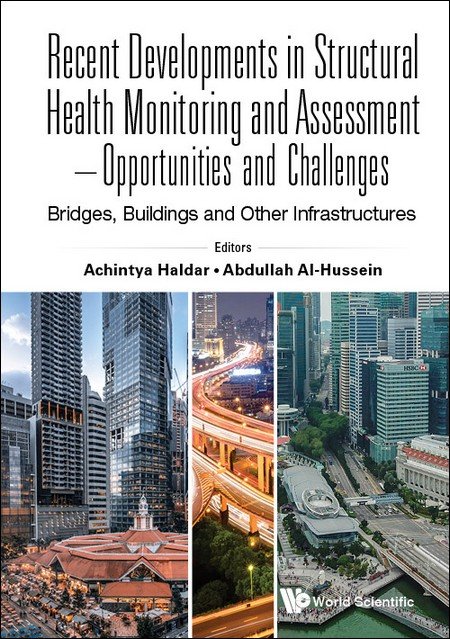System Upgrade on Tue, Oct 25th, 2022 at 2am (EDT)
Existing users will be able to log into the site and access content. However, E-commerce and registration of new users may not be available for up to 12 hours.For online purchase, please visit us again. Contact us at [email protected] for any enquiries.
This is a follow up to Health Assessment of Engineered Structures. It incorporates the most recent developments in health assessment and monitoring of infrastructures covering several advanced conceptual frameworks, different types of sensors, and application potentials. Opportunities and challenges in theoretical, numerical, and experimental investigations generally overlooked in the profession are discussed. Also included are various types of Bayesian filtering concepts improving the commonly used techniques.
Showcasing a multi-faceted, technology-based development in health assessment of infrastructures, several new approaches for health assessment are presented to assess the health of masonry structures, riveted steel railway bridges, and more, such as the use of:
- Modified Social Group Optimization (MSGO) — a human-based meta-heuristic optimization technique,
- autonomous crack detection approach using Artificial Intelligence,
- Augmented Reality (AR) — a digital interface that combines interactive holographic components with the real-world,
- vision-based noncontact and targetless vibration sensors, as well as
- intelligent use of smartphone-based health assessment.
Sample Chapter(s)
Preface
Chapter 1 - Structural Health Assessment: Opportunities and Challenges
- Preface
- About the Editors
- Structural Health Assessment: Opportunities and Challenges
- Bayesian Filter for Parameter Identification in Time Domain
- Efficient Simulation-Based Bayesian Methods for Structural Condition Assessment
- Bayesian Updating of Structures based on a Metropolis–Hastings-Based Heteroscedastic Hierarchical Model
- Particle Filtering for System Identification in Civil Engineering
- Structural Health Monitoring of Civil Infrastructure Using Applied Recursive Bayesian Estimation Methods
- Recent Developments in Unscented Kalman Filtering for Health Assessment of Large Structural Systems
- Joint and Dual Estimation of States and Parameters with Extended and Unscented Kalman Filters
- Autonomous Crack Detection Approach for Masonry Structures Using Artificial Intelligence
- Model Updating and Parameter Identification for Developing Digital Twins for Riveted Steel Railway Bridges
- Structural Health Monitoring of Bridge Truss Using Modified Social Group Optimization Algorithm
- Smartphone-Based Civil Infrastructure Health Monitoring
- Structural System Identification Using Vision-Based Full-Field Spatiotemporal Measurements
- Augmented Reality for Cradle-to-Grave Infrastructure Monitoring, and Inspection
- Index
Chapter 3: Efficient Simulation-Based Bayesian Methods for Structural Condition Assessment
- Pages:73–109
Chapter 4: Bayesian Updating of Structures Based on a Metropolis–Hastings-Based Heteroscedastic Hierarchical Model
- Pages:111–136
Chapter 6: Structural Health Monitoring of Civil Infrastructure Using Applied Recursive Bayesian Estimation Methods
- Pages:171–195
Chapter 7: Recent Developments in Unscented Kalman Filtering for Health Assessment of Large Structural Systems
- Pages:197–222
Chapter 8: Joint and Dual Estimation of States and Parameters with Extended and Unscented Kalman Filters
- Pages:223–252
Chapter 9: Autonomous Crack Detection Approach for Masonry Structures Using Artificial Intelligence
- Pages:253–283
Chapter 10: Model Updating and Parameter Identification for Developing Digital Twins for Riveted Steel Railway Bridges
- Pages:285–318
Chapter 11: Structural Health Monitoring of Bridge Truss Using Modified Social Group Optimization Algorithm
- Pages:319–344
Chapter 13: Structural System Identification Using Vision-Based Full-Field Spatiotemporal Measurements
- Pages:375–405
Chapter 14: Augmented Reality for Cradle-to-Grave Infrastructure Monitoring, and Inspection
- Pages:407–428






